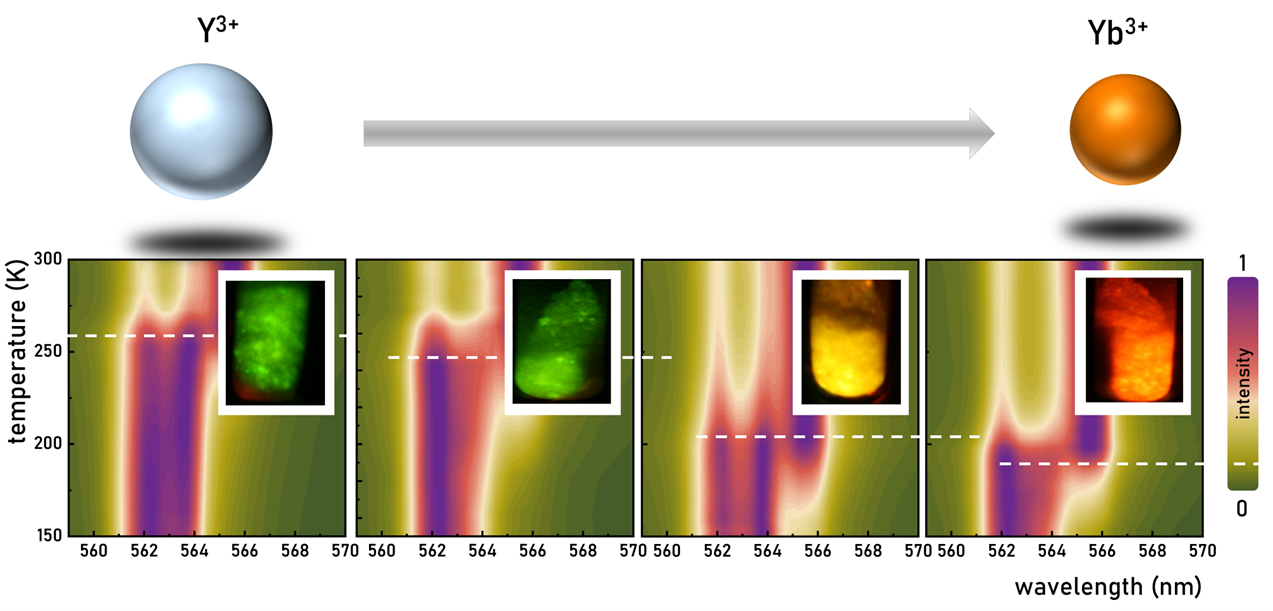The Butterfly Effect: Multifaceted Consequences of Sensitizer Concentration Change in Phase Transition-based Luminescent Thermometer of LiYO2:Er3+,Yb3+
Title: The Butterfly Effect: Multifaceted Consequences of Sensitizer Concentration Change in Phase Transition-based Luminescent Thermometer of LiYO2:Er3+,Yb3+
Authors: L. Marciniak, W. Piotrowski, M. Szymczak, C. D. S. Brites, V. Kinzhybalo, H. Suo, L.D. Carlos, F. Wang
Journal: ACS Applied Materials & Interfaces

Continuing their research on luminescent thermometers based on materials exhibiting a first-order structural phase transition, Prof. Marciniak's group demonstrated how multifaceted changes can be expected in LiYO2:Er3+,Yb3+ under the influence of changing the concentration of the sensitizer. Increasing the concentration of Yb3+ ions not only lowered the temperature of the phase transition, but also, by activating additional energy transfer channels between dopant ions, led to a change in the color of the up-conversion emission from green through yellow to red. What is particularly important from a thermometric perspective is that the concentration of the sensitizer significantly modifies the thermometric parameters of this system, including both the maximum relative sensitivity and the thermal operating range of the thermometer. The conducted studies have shown that LiYO2:Er3+,Yb3+ can operate in three ratiometric thermometric modes: based on the ratio of the intensities of thermally coupled 2H11/2 and 4S3/2 levels, in the luminescence thermochromism mode and in the single-band ratiometric mode. This is the first luminescence thermometer based on a structural phase transition exhibiting up-conversion emission described in the literature to date. More details are presented in a paper published in ACS Applied Materials & Interfaces.
The work presented was funded under the NCN Opus project UMO- 2022/45/B/ST5/01629.
See also
- The Institute
- General information
- Employees
- News
- Scientific News
- Gender equality plan
- Address and contact data
- Research
- Research profile
- List of publications
- List of projects
- International cooperation
- Information in BIP
- Scientific Council
- Organizational structure
- GDPR


